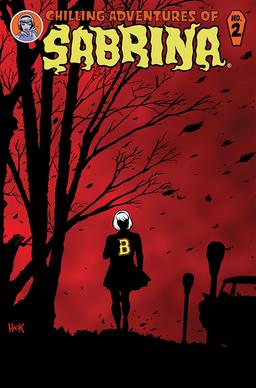
The Salem witch trials were a series of hearings and prosecutions of people accused of witchcraft in colonial Massachusetts between February 1692 and May 1693. More than 200 people were accused. Thirty people were found guilty, nineteen of whom were executed by hanging. One other man, Giles Corey, died under torture after refusing to enter a plea, and at least five people died in the disease-ridden jails.
Elizabeth Parris was one of the young girls who accused other people of being witches during the Salem witch trials. The accusations made by Parris and her cousin Abigail Williams caused the direct death of 20 Salem residents: 19 were hanged, while another, Giles Corey, was pressed to death.

Lucille Frances Lawless is a New Zealand actress and director. She is best known for her roles as Xena in the television series Xena: Warrior Princess, as D'Anna Biers on the re-imagined Battlestar Galactica series, and Lucretia in the television series Spartacus: Blood and Sand and associated series. Since 2019, she has starred as Alexa in the television series My Life Is Murder.

Bewitched is an American fantasy sitcom television series that originally aired for eight seasons on ABC from September 17, 1964, to March 25, 1972. It is about a witch who marries an ordinary mortal man and vows to lead the life of a typical suburban housewife. The show was popular, finishing as the second-rated show in America during its debut season, staying in the top ten for its first three seasons, and ranking in eleventh place for both seasons four and five. The show continues to be seen throughout the world in syndication and on recorded media.

John Hale was the Puritan pastor of Beverly, Massachusetts, and took part in the Salem witch trials in 1692. He was one of the most prominent and influential ministers associated with the witch trials, being noted as having initially supported the trials and then changing his mind and publishing a critique of them.

Brannon Braga is an American television producer, director and screenwriter. Best known for his work in the Star Trek franchise, Braga was a key creative force behind three of the franchise's live action series. He later became an executive producer and writer on several Fox shows including 24, Terra Nova, and The Orville. His film credits include Mission: Impossible 2, Star Trek Generations and Star Trek: First Contact.

Tituba was an enslaved Native American woman who was one of the first to be accused of witchcraft during the Salem witch trials of 1692–1693.

Mercy Lewis was an accuser during the Salem Witch Trials. She was born in Falmouth, Maine. Mercy Lewis, formally known as Mercy Allen, was the child of Philip Lewis and Mary (Cass) Lewis.
The influence of Countess Elizabeth Báthory in popular culture has been notable from the 18th century to the present day. Since her death, various myths and legends surrounding her story have preserved her as a prominent figure in folklore, literature, music, film, games and toys.

Adam Simon is an American director, producer, and screenwriter. His directing credits include Brain Dead (1990), Body Chemistry II: The Voice of a Stranger (1992), and Carnosaur (1993). Simon, along with producer Brannon Braga, co-created the television series Salem. As a screenwriter, Simon is known for Bones (2001), The Haunting in Connecticut (2009), and Books of Blood (2020).

Cultural depictions of the Salem witch trials abound in art, literature and popular media in the United States, from the early 19th century to the present day. The literary and dramatic depictions are discussed in Marion Gibson's Witchcraft Myths in American Culture and see also Bernard Rosenthal's Salem Story: Reading the Witch Trials of 1692

Tituba of Salem Village is a 1964 children's novel by African-American writer Ann Petry about the 17th-century West Indian slave of the same name who was the first to be accused of practicing witchcraft during the 1692 Salem witch trials. Written for children 10 and up, it portrays Tituba as a black West Indian woman who tells stories about life in Barbados to the village girls. These stories are mingled with existing superstitions and half-remembered pagan beliefs on the part of Puritans, and the witchcraft hysteria is partly attributed to a sort of cabin fever during a particularly bitter winter. Petry's portrayal of the helplessness of women in that period, particularly slaves and indentured servants, is key to understanding her view of the Tituba legend.

Janet Ruth Montgomery is an English film and TV actress. She first gained attention for her role as Ames in the second season of the television series Human Target (2010–11), and also for her appearance in the 2009 straight-to-DVD film The Hills Run Red. She played the lead character in the television drama Made in Jersey (2012), cancelled after eight episodes. From 2014 to 2017, she starred as the lead character, Mary Sibley, in the series Salem. From 2018 to 2023, Montgomery played the role of Lauren Bloom on the medical drama television series New Amsterdam.

Salem is an American supernatural horror television series created by Brannon Braga and Adam Simon, loosely inspired by the real Salem witch trials in the 17th century.

Chilling Adventures of Sabrina is an American comic book series published by Archie Horror, an imprint of Archie Comics, beginning in 2014. The series is a darker take on the characters and setting of Sabrina the Teenage Witch. It is written by Roberto Aguirre-Sacasa, with art by Robert Hack, and is inspired by the appearances of Sabrina in Aguirre-Sacasa's other Archie series, Afterlife with Archie.

The first season of Salem, an American horror–drama television series on WGN America, premiered on April 20, 2014, and concluded on July 13, 2014, consisting of thirteen episodes. Created for television by Adam Simon and Brannon Braga, who write or co-write episodes of the show, the series is based on the Salem Witch Trials. It was executive produced by Braga, Coby Greenberg and David Von Ancken, with Braga and Simon assuming the role of showrunner.

The second season of Salem, an American horror–drama television series on WGN America, premiered on April 5, 2015, and concluded on June 28, 2015, consisting of thirteen episodes. Created for television by Adam Simon and Brannon Braga, who write or co-write episodes of the show, the series is based on the Salem Witch Trials. It was executive produced by Braga, Coby Greenberg and David Von Ancken, with Braga and Simon assuming the role of showrunner.
The third and final season of Salem, an American horror–drama television series on WGN America, premiered on November 2, 2016, and concluded on January 25, 2017, consisting of ten episodes. Created for television by Adam Simon and Brannon Braga, who write or co-write episodes of the show, the series is based on the Salem Witch Trials. It was executive produced by Braga, Coby Greenberg and David Von Ancken, with Braga and Simon assuming the role of showrunner.

Oliver Bell is an American former child actor, who was based in Florida. He began his professional acting career at the age of eight. He is best known for his role as Little John/the Devil on the WGN America series Salem, and Little Boy in the HBO sci-fi series Westworld.

















